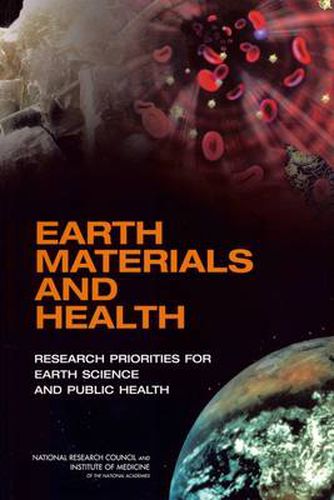Readings Newsletter
Become a Readings Member to make your shopping experience even easier.
Sign in or sign up for free!
You’re not far away from qualifying for FREE standard shipping within Australia
You’ve qualified for FREE standard shipping within Australia
The cart is loading…






A range of natural earth materials, like arsenic or fluoride, have long been linked to significant human health effects. Improved understanding of the pervasive and complex interactions between earth materials and human health will require creative collaborations between earth scientists and public health professionals. At the request of the National Science Foundation, U.S. Geological Survey, and National Aeronautics and Space Administration, this National Research Council book assesses the current state of knowledge at the interface between the earth sciences and public health disciplines.This book identifies high-priority areas for collaborative research, including understanding the transport and bioavailability of potentially hazardous earth materials, using risk-based scenarios to mitigate the public health effects of natural hazards under current and future climate regimes, and understanding the health risks that result from disturbance of earth systems. Geospatial information - geological maps for earth scientists and epidemiological data for public health professionals - is identified as one of the essential integrative tools that is fundamental to the activities of both communities. This book also calls for increased data sharing between agencies to promote interdisciplinary research without compromising privacy.
$9.00 standard shipping within Australia
FREE standard shipping within Australia for orders over $100.00
Express & International shipping calculated at checkout
A range of natural earth materials, like arsenic or fluoride, have long been linked to significant human health effects. Improved understanding of the pervasive and complex interactions between earth materials and human health will require creative collaborations between earth scientists and public health professionals. At the request of the National Science Foundation, U.S. Geological Survey, and National Aeronautics and Space Administration, this National Research Council book assesses the current state of knowledge at the interface between the earth sciences and public health disciplines.This book identifies high-priority areas for collaborative research, including understanding the transport and bioavailability of potentially hazardous earth materials, using risk-based scenarios to mitigate the public health effects of natural hazards under current and future climate regimes, and understanding the health risks that result from disturbance of earth systems. Geospatial information - geological maps for earth scientists and epidemiological data for public health professionals - is identified as one of the essential integrative tools that is fundamental to the activities of both communities. This book also calls for increased data sharing between agencies to promote interdisciplinary research without compromising privacy.